Your Japanese stiltgrass look alikes images are ready. Japanese stiltgrass look alikes are a topic that is being searched for and liked by netizens now. You can Download the Japanese stiltgrass look alikes files here. Download all royalty-free vectors.
If you’re looking for japanese stiltgrass look alikes pictures information linked to the japanese stiltgrass look alikes interest, you have visit the right blog. Our website frequently gives you suggestions for seeking the maximum quality video and picture content, please kindly search and find more informative video content and graphics that fit your interests.
Japanese Stiltgrass Look Alikes. In a sad reality however that irreproachable grass is quite the opposite. The unique line of silver hairs on the Stiltgrass can be used to distinguish it. This publication gives simple descriptions and clear pictures of these characteristics along with details on how to distinguish several common look-a-like species. Mow in early to mid September before seed has developed.
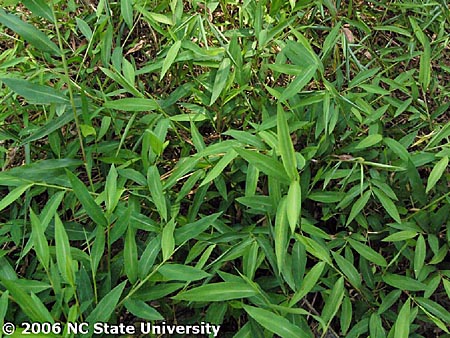 Stiltgrass Fairfax Gardening From fairfaxgardening.org
Stiltgrass Fairfax Gardening From fairfaxgardening.org
Japanese stiltgrass is native to Asia including hina India Japan Korea and Malaysia. Japanese stiltgrass is commonly mistaken for the native perennial Virginia cutgrass Leersia virginica or some of the Smartweeds Persicaria spp. FS-2 Glyphosate 300. Being a monocot the leaves have parallel leaf venation and later in the season have a white or silver leaf midrib. Return to Land Gallery. The stems can root at the nodes.
Seed may be carried further by water currents during heavy rains.
The leaves are pale-green alternate lance-shaped 1-3 inches long asymmetrical with a shiny. We discuss its identification including some look-alikes and control thorough the use mowing mechanical pulling and chemical spraying using glyphosate Grass-B-Gone Fusilade II Acclaim Extra and Milestone. Japanese stiltgrass Microstegium vimineum also called Nepalese browntop is an aggressive invader of forest lands throughout the eastern United States. The stems can root at the nodes. Seed may be carried further by water currents during heavy rains. However the plant can grow vegetatively creating localized.
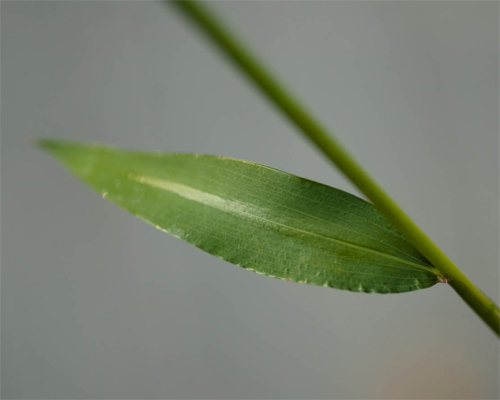 Source: njaes.rutgers.edu
Source: njaes.rutgers.edu
Especially before you undertake any control measures. Japanese stiltgrass has many native look-alikes. Join the Woodland Steward in this visit to Oak. At first glance Japanese stiltgrass appears to be an innocent pleasant-looking plant. Look for asymmetrical leaves with a shiny midrib and the stilt-like growth form.
 Source: pinterest.com
Source: pinterest.com
Identification characteristics are located on the back of this handout. Japanese stiltgrass seedlings in early spring. Neal Habitat and Distribution Japanese stiltgrass is most commonly found in shady moist disturbed areas including wetlands ditch banks utility rights of way mulched landscape beds and low maintenance turf. Ackground and ommon Look-alikes. The leaves are 3 to 4 inches long.
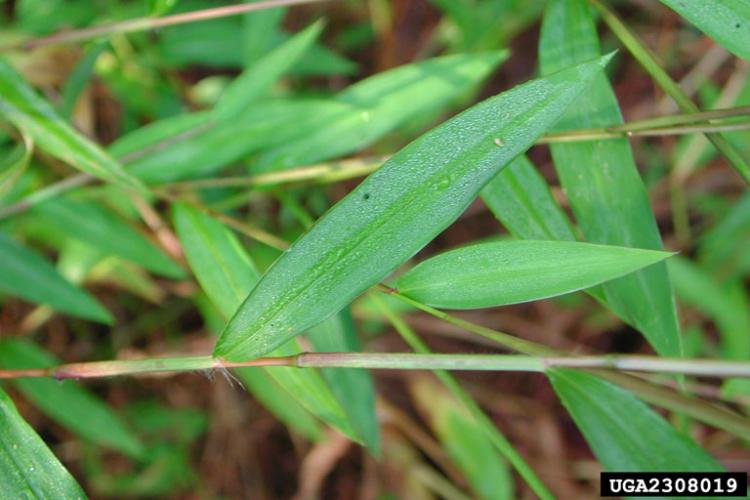 Source: vtinvasives.org
Source: vtinvasives.org
We discuss its identification including some look-alikes and control thorough the use mowing mechanical pulling and chemical spraying using glyphosate Grass-B-Gone Fusilade II Acclaim Extra and Milestone. We discuss its identification including some look-alikes and control thorough the use mowing mechanical pulling and chemical spraying using glyphosate Grass-B-Gone Fusilade II Acclaim Extra and Milestone. The flowers grow on thin spikes at the end of the. It is a colonial species that spreads during the summer and fall by rooting at stem nodes that touch the ground. The Japanese Stiltgrass looks similar to some native plants including the Virginia cutgrass Leersia virginica and Pennsylvania knotweed Polygonum persicaria.
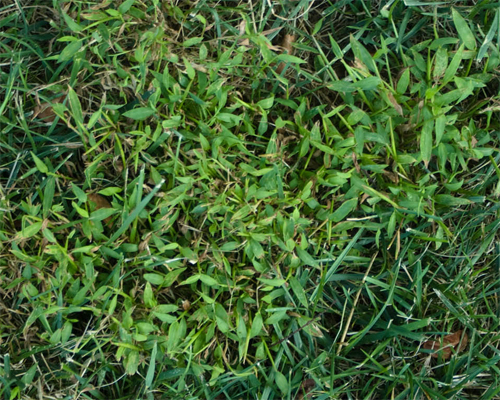 Source: njaes.rutgers.edu
Source: njaes.rutgers.edu
This publication gives simple descriptions and clear pictures of these characteristics along with details on how to distinguish several common look-a-like species. Its flower spike is much larger up to 10 inches long and its stem has patches of dense. Japanese stiltgrass is native to Asia including hina India Japan Korea and Malaysia. Species within the Leersia and Polygonum may resemble Japanese stiltgrass. Fortunately Japanese stiltgrass has a unique combination of characteristics that make field identification possible.
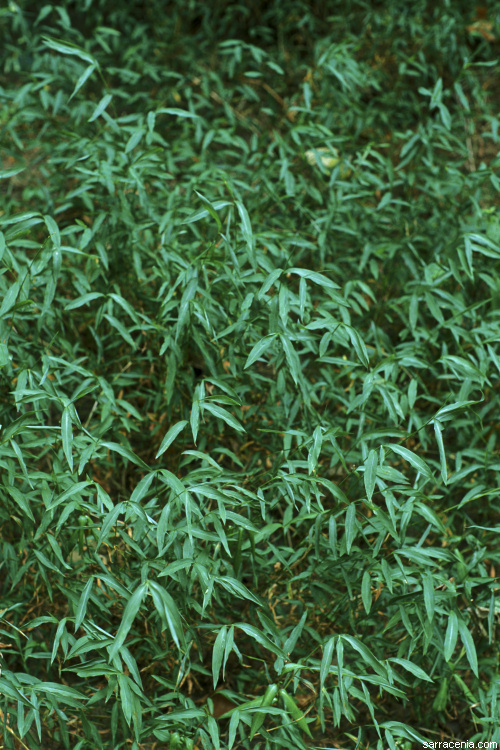 Source: inaturalist.org
Source: inaturalist.org
Invasive Plants and their Native Look-alikes anIdentificationGuidefortheMid-Atlantic MatthewSarver AmandaTreher LennyWilson RobertNaczi FaithBKuehn. Japanese Stiltgrass look-alikes Japanese Stiltgrass looks very similar to some native plants. Invasive Plants and their Native Look-alikes anIdentificationGuidefortheMid-Atlantic MatthewSarver AmandaTreher LennyWilson RobertNaczi FaithBKuehn. Most wouldnt even give the grass a single thought if they were to encounter it. Infestations can impact the diversity of native species reduce wildlife habitat and disrupt important ecosystem functions.
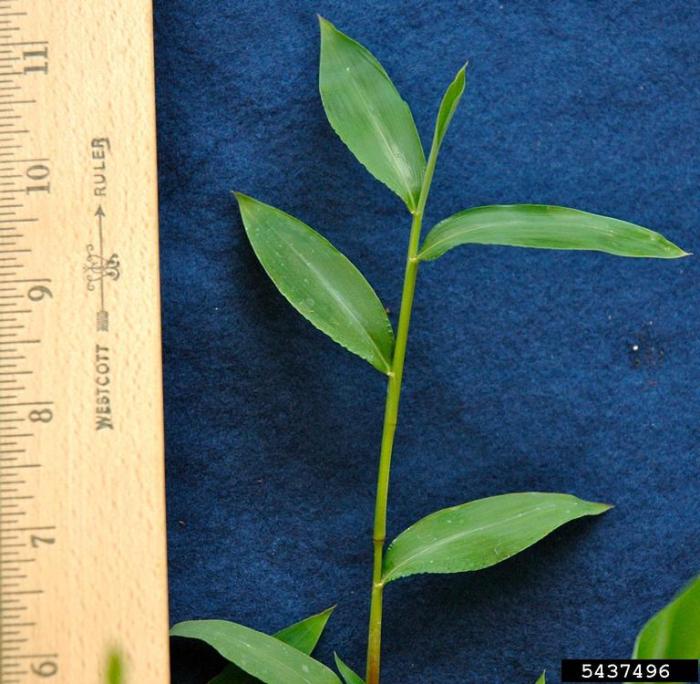 Source: vtinvasives.org
Source: vtinvasives.org
This publication gives simple descriptions and clear pictures of these characteristics along with details on how to distinguish several common look-a-like species. Fortunately Japanese stiltgrass has a unique combination of characteristics that make field identification possible. Being a monocot the leaves have parallel leaf venation and later in the season have a white or silver leaf midrib. FS-2 Glyphosate 300. Join the Woodland Steward in this visit to Oak.
 Source: extension.illinois.edu
Source: extension.illinois.edu
The stems remain over winter forming a dense matted layer or thatch over the soil. Monitor until the first frost to ensure any regrowth does not develop seed. Japanese Stiltgrass look-alikes Japanese Stiltgrass looks very similar to some native plants. Look-alikes Virginia cutgrass Leersia virginica looks similar and grows in forested areas. Species within the Leersia and Polygonum may resemble Japanese stiltgrass.
 Source: fairfaxgardening.org
Source: fairfaxgardening.org
Fact Sheet Microstegium vimineum. Common look-alikes like White Cut Grass Leersia virginica lack this silvery stripe on the blade. In a sad reality however that irreproachable grass is quite the opposite. Attention to new infestations should be a priority. Infestations can impact the diversity of native species reduce wildlife habitat and disrupt important ecosystem functions.
 Source: inaturalist.org
Source: inaturalist.org
Common look-alikes like White Cut Grass Leersia virginica lack this silvery stripe on the blade. Infestations can impact the diversity of native species reduce wildlife habitat and disrupt important ecosystem functions. The Japanese Stiltgrass looks similar to some native plants including the Virginia cutgrass Leersia virginica and Pennsylvania knotweed Polygonum persicaria. Fortunately Japanese stiltgrass has a unique combination of characteristics that make field identification possible. Attention to new infestations should be a priority.
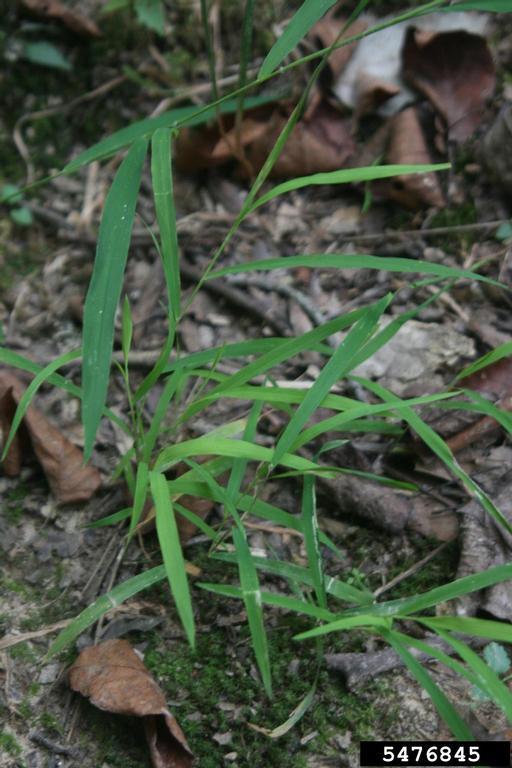 Source: vtinvasives.org
Source: vtinvasives.org
There are a few native look-alikes such as Virginia cutgrass Leersia virginica Willd Pennsylvania knotweed Polygonum persicaria L crabgrass Digitaria spp and nimblewill Muhlenbergia schreberi JF. Neal Habitat and Distribution Japanese stiltgrass is most commonly found in shady moist disturbed areas including wetlands ditch banks utility rights of way mulched landscape beds and low maintenance turf. Japanese stiltgrass is an annual grass with all plants dying each fall. Look-Alikes The native whitegrass Leersia virginica is very similar in growth habit and site preferences but has two distinct differences from Japanese stiltgrass. The Japanese Stiltgrass looks similar to some native plants including the Virginia cutgrass Leersia virginica and Pennsylvania knotweed Polygonum persicaria.
 Source: invasivegarden.com
Source: invasivegarden.com
Japanese Stiltgrass infestation. Dead straw-colored stems persist through the winter. Photo by Nick Seaton Invasive Advantages. The unique line of silver hairs on the Stiltgrass can be used to distinguish it. There are a few native look-alikes such as Virginia cutgrass Leersia virginica Willd Pennsylvania knotweed Polygonum persicaria L crabgrass Digitaria spp and nimblewill Muhlenbergia schreberi JF.
 Source: pinterest.com
Source: pinterest.com
We discuss its identification including some look-alikes and control thorough the use mowing mechanical pulling and chemical spraying using glyphosate Grass-B-Gone Fusilade II Acclaim Extra and Milestone. The unique line of silver hairs on the Stiltgrass can be used to distinguish it. Ackground and ommon Look-alikes. The primary characteristics that give Japanese stiltgrass an advantage over native plants are. Its flower spike is much larger up to 10 inches long and its stem has patches of dense.
 Source: youtube.com
Source: youtube.com
Neal Habitat and Distribution Japanese stiltgrass is most commonly found in shady moist disturbed areas including wetlands ditch banks utility rights of way mulched landscape beds and low maintenance turf. Especially before you undertake any control measures. The primary characteristics that give Japanese stiltgrass an advantage over native plants are. The primary mode of spread is through water and wildlife and human activity moving the prolific number of seeds 100 -1000 per plant thought to remain viable up to 7 years in the soil. The stems remain over winter forming a dense matted layer or thatch over the soil.
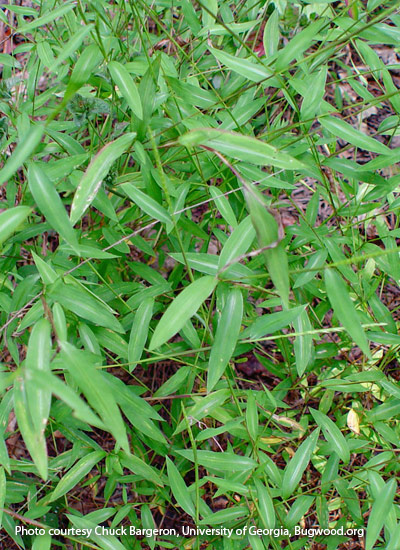 Source: gardengatemagazine.com
Source: gardengatemagazine.com
Japanese Stiltgrass is a highly invasive non-native plant that has a significant negative impact on our native woodlands. However infestations are common in upland forests as well. Japanese stiltgrass seedlings in early spring. Neal Habitat and Distribution Japanese stiltgrass is most commonly found in shady moist disturbed areas including wetlands ditch banks utility rights of way mulched landscape beds and low maintenance turf. These rooted plantlets can fall to the ground and grow or be spread to other areas by animals.
 Source: jlwcisma.weebly.com
Source: jlwcisma.weebly.com
Attention to new infestations should be a priority. Fortunately Japanese stiltgrass has a unique combination of characteristics that make field identification possible. Japanese stiltgrass is commonly mistaken for the native perennial Virginia cutgrass Leersia virginica or some of the Smartweeds Persicaria spp. Look-alikes cutgrass Leersia virginica Native grass similar in appearance and habitat Flowers earlier has sharp leaf edges and has more open and branched flowers. Japanese stiltgrass is an annual grass with all plants dying each fall.
 Source: pinterest.com
Source: pinterest.com
It is important for you to determine if the plants you are looking at are native grasses that should be there or are Japanese Stiltgrass. Stiltgrass is considered one of the most damaging invasive plant species in the United States. Monitor until the first frost to ensure any regrowth does not develop seed. Photo by Nick Seaton Invasive Advantages. Common look-alikes like White Cut Grass Leersia virginica lack this silvery stripe on the blade.
 Source: inaturalist.org
Source: inaturalist.org
Photo by Nick Seaton Invasive Advantages. Look-alikes Virginia cutgrass Leersia virginica looks similar and grows in forested areas. We discuss its identification including some look-alikes and control thorough the use mowing mechanical pulling and chemical spraying using glyphosate Grass-B-Gone Fusilade II Acclaim Extra and Milestone. The Japanese Stiltgrass looks similar to some native plants including the Virginia cutgrass Leersia virginica and Pennsylvania knotweed Polygonum persicaria. Japanese Stiltgrass look-alikes Japanese Stiltgrass looks very similar to some native plants.
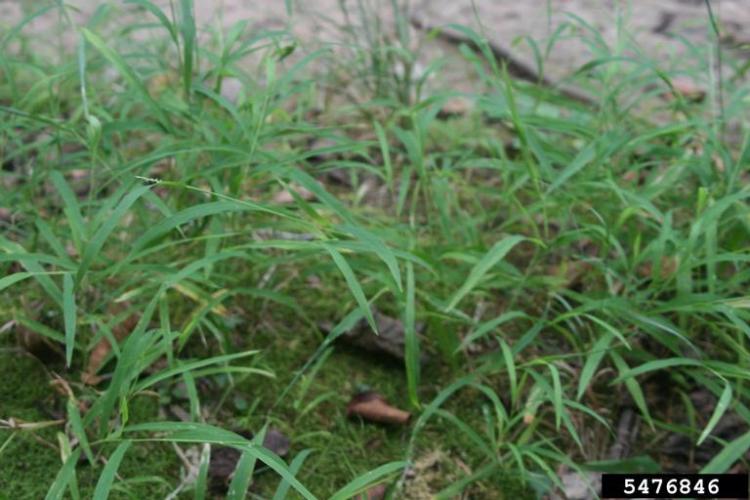 Source: vtinvasives.org
Source: vtinvasives.org
The leaves are 3 to 4 inches long. Japanese stiltgrass Microstegium vimineum also called Nepalese browntop is an aggressive invader of forest lands throughout the eastern United States. At first glance Japanese stiltgrass appears to be an innocent pleasant-looking plant. Flower Time and Description. These rooted plantlets can fall to the ground and grow or be spread to other areas by animals.
This site is an open community for users to do submittion their favorite wallpapers on the internet, all images or pictures in this website are for personal wallpaper use only, it is stricly prohibited to use this wallpaper for commercial purposes, if you are the author and find this image is shared without your permission, please kindly raise a DMCA report to Us.
If you find this site good, please support us by sharing this posts to your own social media accounts like Facebook, Instagram and so on or you can also save this blog page with the title japanese stiltgrass look alikes by using Ctrl + D for devices a laptop with a Windows operating system or Command + D for laptops with an Apple operating system. If you use a smartphone, you can also use the drawer menu of the browser you are using. Whether it’s a Windows, Mac, iOS or Android operating system, you will still be able to bookmark this website.






